|
|
BACK | NEXT |  |
|
|
STUDY QUESTIONS |
|
|
BACK | NEXT |  |
|
|
STUDY QUESTIONS |
|
The nine major planets make up most of the rest of the mass in the solar system. In sequence from the Sun they are: |
|||
|
|
|
|
|
 |
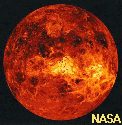 |
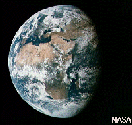 |
 |
|
|
|||
|
|
|
|
|
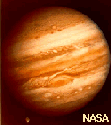 |
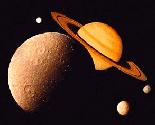 |
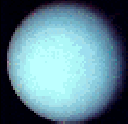 |
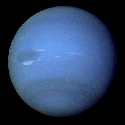 |
|
|
|||
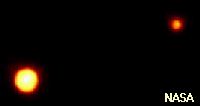 |
|||
| (Due to the eccentricity
of the orbit of Pluto, it is tracking inside the orbit of Neptune some
of the time).
They all travel around the sun (revolve) in elliptical orbits in the same direction (counterclockwise when viewed from the North Celestial Pole). Most, (excepting Venus, Uranus and Pluto) also rotate in the same direction. Held to the sun by gravity, they follow elliptical paths, and the closer a planet is to the sun, the faster it revolves (Mercury, 88 days, Pluto 248 yrs; cf. Keplerís laws). The planets tend to fall into two distinct categories,
the inner (terrestrial) planets (first four) and the outer (jovian)
planets (next four). The inner planets are relatively small, high density,
solid, slowly rotating bodies with few moons. The gaseous outer planets
are massive, low-density, rapidly rotating bodies with many moons. Pluto,
the farthest planet, does not fit either category very well. The moons
themselves are a collection of bodies as varied as the planets they revolve
around.
|
|||